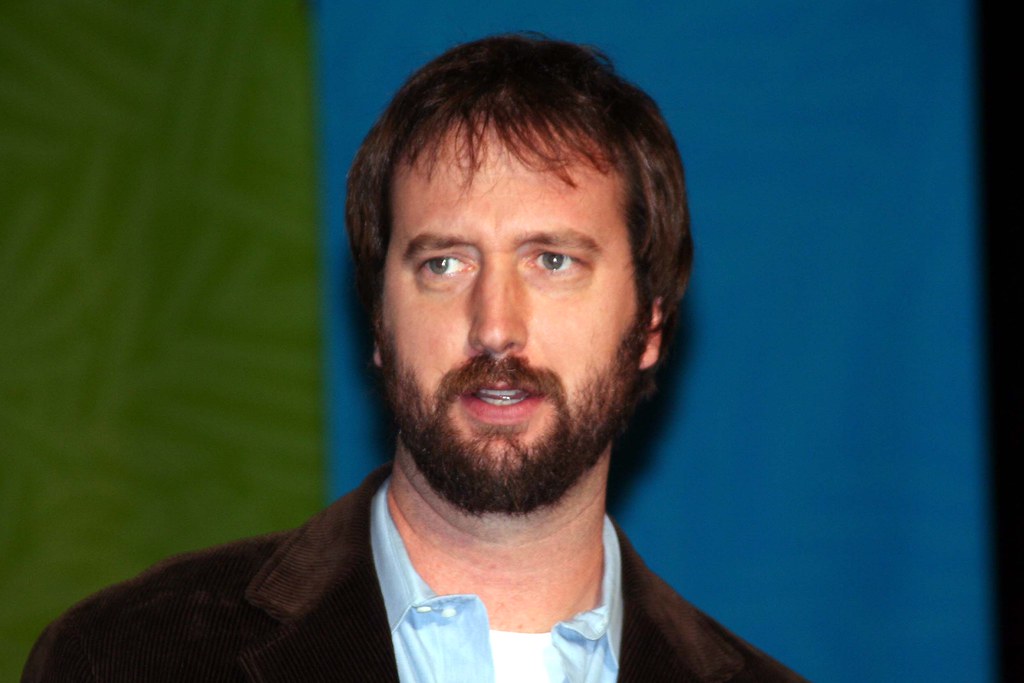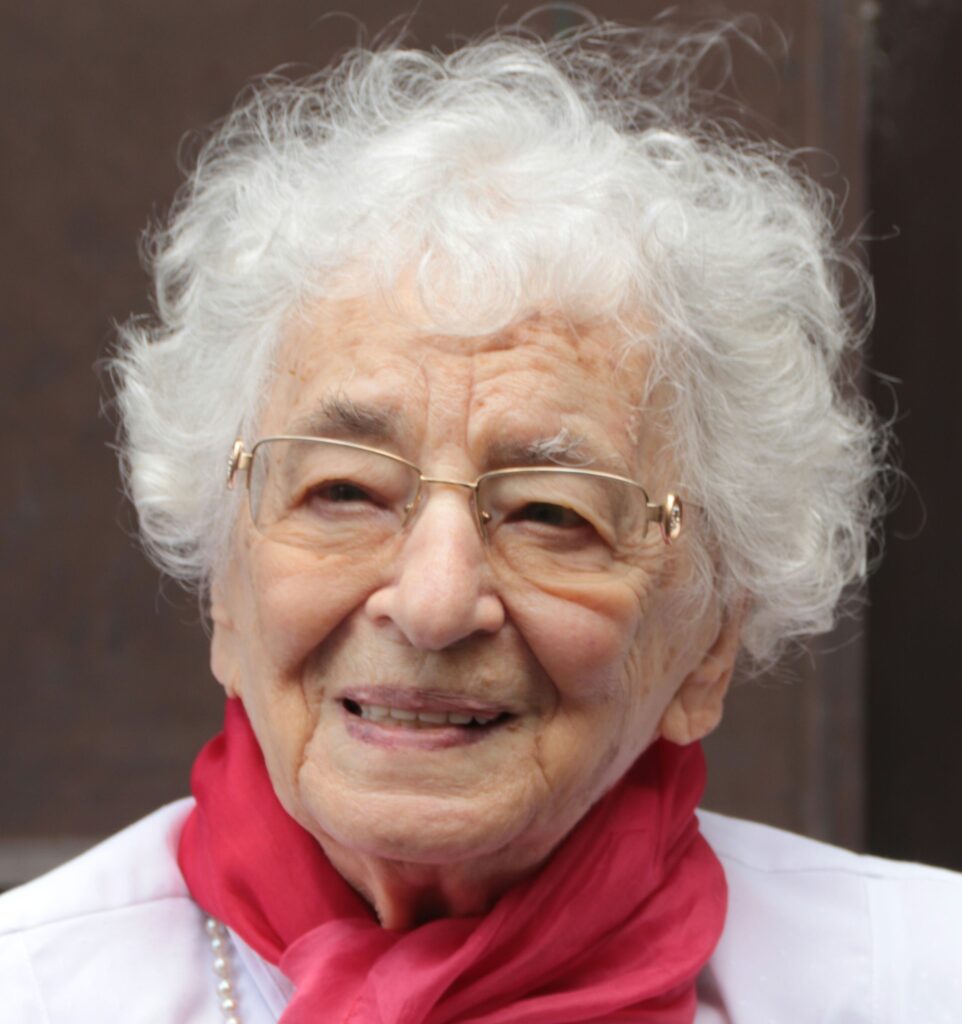
The world of Hollywood, often perceived as a glittering beacon of continuous success, hides a brutal truth beneath its polished surface. For every actor who finds sustained stardom, there are countless others whose promising trajectories are irrevocably altered, sometimes by the very roles that first brought them widespread recognition. A single misstep – be it a critically panned performance, a catastrophic box office bomb, or simply an ill-advised choice – can dismantle a once-thriving career with swift, merciless efficiency.
This inherent volatility within the entertainment industry means that even those at the pinnacle of fame are not immune to career reversals. The glamour and charm projected on-screen can starkly contrast with the professional challenges faced off-screen, where slip-ups are not just personal setbacks but are magnified across global screens, etched into cinematic history for generations to scrutinize and critique. It serves as a potent reminder that in the high-stakes game of Hollywood, all it truly takes is one pivotal role to tarnish a star’s luster.
In this in-depth analysis, we will delve into the compelling narratives of a selection of actors whose careers were profoundly impacted by a defining role. We aim to explore the specific circumstances surrounding these turns of events, understanding the ripple effects on their standing in the industry, and observing how some navigated these slumps while others found their paths drastically rerouted. This journey through their experiences offers a candid look at the transient nature of fame and the enduring power of a single role to shape a legacy.

1. **Tami Stronach in ‘The NeverEnding Story’**
Tami Stronach, at the tender age of 10, captured the hearts of a generation as the ethereal Childlike Empress (also known as Moon Child) in the 1984 children’s fantasy classic, “The NeverEnding Story.” This box-office sensation stands as one of the most magical films of the 1980s, and at its core was Stronach’s character, the immortal benevolent ruler of Fantastica. Despite appearing in only two scenes throughout the entire film, the narrative’s very essence revolved around her, making her the movie’s most endearing figure.
Her discovery was serendipitous; acting in a community theater in California, a casting agent spotted her, leading to her iconic role. Stronach cherished her time on the movie, describing the experience as one that “definitely took my sense of wonder to a new level.” She embraced the film’s message, which she articulated as keeping “that childlike part of us alive,” a sentiment she truly took to heart. The creative environment, surrounded by “an army of creatives who brought Fantasia to life,” left a profound impression on the young actress.
However, the unforeseen consequences of overnight stardom quickly became apparent, overwhelming both Stronach and her parents. Stronach expressed a distinction between her desires, stating, “I did not desperately want to be a star. I desperately wanted to act,” highlighting the divergent paths of ambition. The film’s smash hit status brought with it unwanted attention, including older men finding her family’s address and appearing at their California home. The situation escalated to a producer even offering her a nude role, a creepy and unwelcome turn that soured the young girl and her parents on Hollywood.
Her parents, ill-equipped to manage the sudden onslaught of fame, chose to prioritize their daughter’s well-being over a burgeoning career in Los Angeles. Stronach reflected on this, noting, “The bottom line is my parents just weren’t equipped to be managers. We weren’t in it for the money, and we certainly weren’t in it for the fame.” She acknowledged that “if I had moved to LA and they had decided to help me hunt for projects, we could have found those. But that was just not a step we as a family were going to take.” This decision effectively steered her away from the mainstream film industry.
After graduating high school, Stronach opted for a different artistic path, moving to New York to pursue a professional dancing career. She achieved considerable success in the city, eventually establishing her own company and teaching dance at Marymount Manhattan College. Her story exemplifies how an early, iconic role, while immensely popular, can lead to a deliberate redirection away from Hollywood’s intense spotlight, particularly when personal safety and familial values are at stake.
Read more about: Remember Them? 10 Iconic Actors Who Crushed One Role Then Ghosted Hollywood For Good!

2. **Freddie Prinze Jr. in ‘Scooby-Doo’**
Freddie Prinze Jr. was undeniably America’s quintessential teen heartthrob during the 1990s, gracing the silver screen in a string of successful films that cemented his status. From leading roles in beloved ’90s hits such as “She’s All That” and “I Know What You Did Last Summer,” he personified the charming, relatable protagonist that audiences adored. His career seemed poised for continued ascent as the new millennium dawned, though a significant shift in his professional trajectory was about to unfold.
The early 2000s saw Prinze Jr.’s career take a considerable hit with the release of the live-action “Scooby-Doo” movies. While the iconic cartoon franchise boasted a vast and loyal fanbase, its big-screen adaptations, where Prinze Jr. played the bleach-blond paranormal investigator Fred, were met with scathing reviews from critics. Despite a “good showing at the box office” for the first film, they ultimately “failed to connect with audiences” in a meaningful way, leaving his reputation as a leading man severely tarnished.
The critical lambasting and disappointing public reception of “Scooby-Doo” and its 2004 sequel had a profound effect on Prinze Jr.’s film career. He later admitted that he “didn’t have fun” making either movie, a sentiment that underscored his subsequent decision to abandon Hollywood’s intense focus on leading roles. The pursuit of credibility, he revealed, was something he more or less relinquished after his return for the follow-up film.
In the aftermath of the “Scooby-Doo” films, Prinze Jr.’s cinematic endeavors took a backseat to a diverse range of other creative pursuits. He successfully transitioned into voice acting, lending his talents to acclaimed TV shows like “Star Wars Rebels” and various video games. Furthermore, he explored roles behind the scenes, finding success in producing and writing for World Wrestling Entertainment, showcasing a versatile talent beyond the glare of the big screen.
Prinze Jr.’s narrative illustrates a common challenge for actors whose fame peaks with a specific genre or demographic: the difficulty of transitioning into broader, critically acclaimed roles after a perceived misstep. While his career as a traditional movie star never fully recovered its ’90s momentum, he skillfully leveraged his abilities into alternative entertainment avenues, maintaining a significant presence in the industry through different mediums.
Read more about: From Co-Stars to Soulmates: The Most Epic On-Set Romances That Lit Up Hollywood
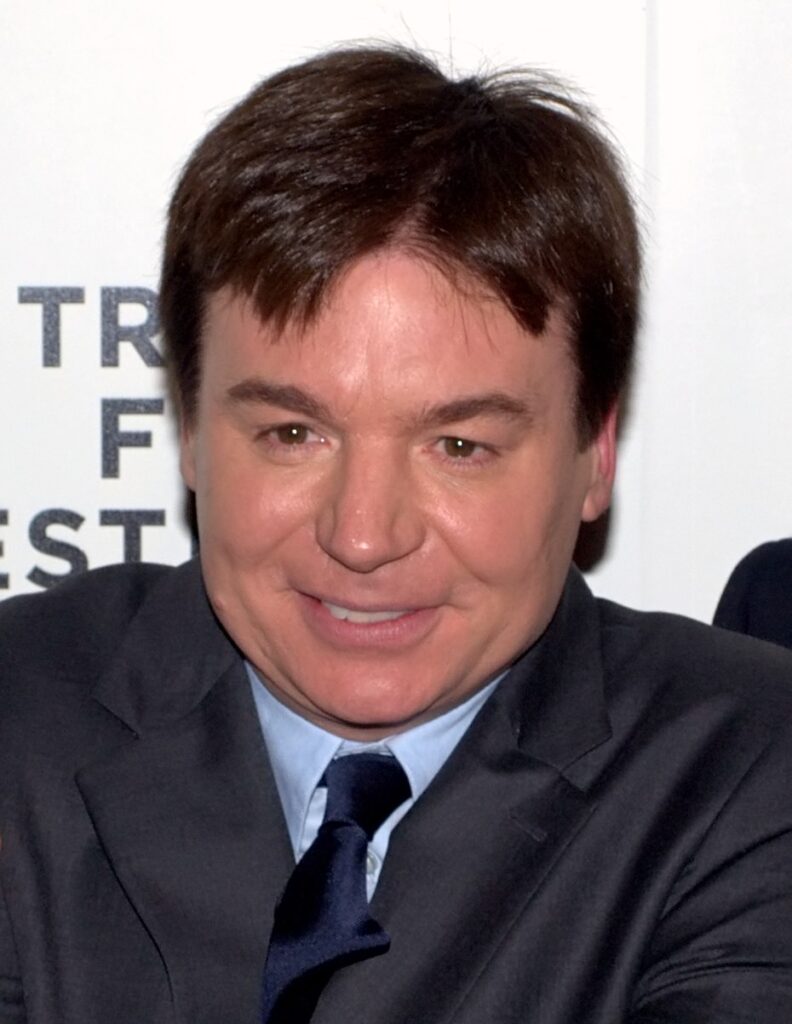
3. **Mike Myers in ‘The Love Guru’**
Mike Myers stood as a titan of comedic genius throughout the 1990s and early 2000s, crafting indelible characters that permeated popular culture. His iconic contributions to “Wayne’s World,” the “Austin Powers” franchise, and the globally beloved “Shrek” movies solidified his status as a comedic powerhouse. These successes, however, contrasted sharply with a portfolio that, upon closer inspection, revealed a significant number of cinematic misfires, often overshadowed by his more celebrated work.
Before the truly catastrophic hit, Myers had already accumulated a series of films that failed to ignite critical or commercial interest, such as the lackluster “So I Married an Axe Murderer” and the “cringeworthy” adaptation of “The Cat in the Hat.” These projects suggested a waning luster to his star power. Yet, it was a particular, ill-fated movie that delivered what many observers consider the definitive blow to his reign as a Hollywood comedic favorite: “The Love Guru” in 2008.
“The Love Guru” was an unmitigated disaster, both critically and commercially. Myers starred as a self-proclaimed guru attempting to salvage a failing hockey team, a premise that yielded not just a bad film, but one described as “catastrophic.” It bombed decisively at the box office and garnered three Golden Raspberry Awards, cementing its place as a career low point. This film marked a significant turning point, signaling the end of his consistent appeal as a leading man in Hollywood comedies.
Following “The Love Guru,” Myers largely receded from the public eye, his presence on screen becoming notably sparse for an extended period. He eventually re-emerged in 2017 as the host of a “Gong Show” revival, adopting the character of “Tommy Maitland,” a move that hinted at a shift towards character-driven, less front-and-center roles. Subsequent acting appearances included supporting parts in “Bohemian Rhapsody” and “Terminal.”
However, the lingering shadow of his past box office failures seemed to follow him, with his most recent film, “Amsterdam,” also being met with “scathing reviews.” Myers’ career arc highlights the immense pressure on comedic actors to consistently deliver hits, and how a monumental flop can fundamentally alter a once-dominant presence in the industry, leading to a prolonged struggle to reclaim previous levels of success.
Read more about: A Heartbreaking Tribute: Remembering 14 Gen X Movie Stars We Lost Far Too Soon
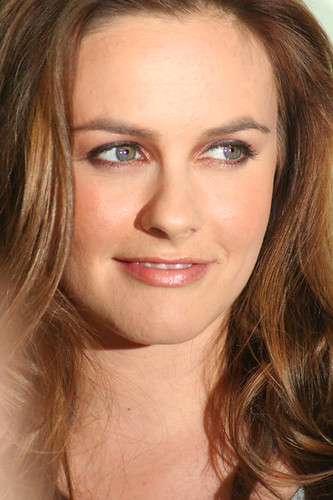
4. **Alicia Silverstone in ‘Batman & Robin’**
Alicia Silverstone was one of Hollywood’s most vibrant and sought-after stars in the 1990s, her career trajectory “as hot as a Valley girl’s cell phone.” She became an “It Girl” after her breakout performance in “Clueless,” a role that earned her widespread acclaim and solidified her status as a teen icon. Her momentum seemed unstoppable, yet a pivotal role in a superhero blockbuster would dramatically alter the course of her burgeoning career.
Things took a drastic turn for Silverstone after her portrayal of Batgirl in Joel Schumacher’s “Batman & Robin” in 1997. The film, famously dubbed a “campy superhero flick,” suffered from poor reception, leading to Silverstone winning a Razzie Award for her performance. The critical panning was not the sole burden; she was also subjected to “mercilessly body shamed by journalists” during the film’s press tour for allegedly gaining weight, adding a layer of personal distress to the professional setback.
This entire experience deeply impacted Silverstone, causing her to grow wary of the Hollywood machine. She openly confessed to The Guardian that “That definitely wasn’t my favorite film-making experience,” and revealed, “I stopped loving acting for a very long time.” The failure of “Batman & Robin” not only stalled her career but also contributed to the poor reception of her subsequent film, “Excess Baggage,” a crime-comedy intended to be her next big starring vehicle.
In the years following this cinematic disaster, Silverstone consciously took a step back from the intense limelight of mainstream Hollywood. She channeled her energy into activism, working to protect elephants in Africa and the rainforest in Peru, demonstrating a commitment to causes beyond the entertainment industry. While she never fully ceased acting, the subsequent decade saw her struggling to secure roles that could effectively showcase her range beyond her signature “Cher” persona from “Clueless.”
Despite the significant setback, Silverstone has slowly and surely fought her way back into the limelight. She received a Golden Globe nomination in 2003 for her short-lived ABC series “Miss Match” and has taken on roles in films like “The Lodge,” “The Baby-Sitters Club,” and “Senior Year.” However, the indelible mark of “Batman & Robin”‘s failure undeniable took “the wind out of the sails of a promising young career,” reshaping her path in the industry permanently.
Read more about: From ‘Clueless’ to Activism: How Alicia Silverstone Became Our Enduring ’90s Icon

5. **Elizabeth Berkley in ‘Showgirls’**
Elizabeth Berkley captivated audiences in the late 1980s and early 1990s with her charismatic portrayal of Jessie Spano, the brainy yet somewhat neurotic character on “Saved by the Bell.” From 1989 to 1993, she appeared in 75 episodes of the immensely popular teen sitcom, endearing herself to a generation of viewers with her charm and wit. However, as the series concluded, Berkley, then 23, made a deliberate choice to pursue more mature roles, setting the stage for a dramatic turning point in her career.
Her ambition led her to the much-hyped “Showgirls,” which made history as the first major NC-17 movie to receive a wide release. Berkley won the lead role over a young Charlize Theron, a testament to her perceived potential. Unfortunately, the film proved to be a critical and commercial catastrophe. It “tanked and incited brutal reviews,” earning a record 13 Golden Raspberry Award nominations and seven wins, including Worst Picture and, eventually, Worst Picture of the Decade. Berkley herself took home Razzies for Worst Actress and Worst New Star.
The aftermath of “Showgirls” was particularly harsh for Berkley. Hollywood, it seemed, “turned its back” on her, as director Paul Verhoeven later stated in a 2015 interview. She candidly revealed in a 2020 interview with People, “I was left out in the cold and I was a pariah in the industry I had worked so hard for.” This professional ostracism made it exceedingly difficult for her to secure major roles in big-budget features, effectively derailing the promising career she once had.
Berkley’s career subsequently shifted from big-budget features to primarily appearing in smaller parts, including roles on Lifetime Original Movies and sporadic guest appearances on television shows. She was seen on “CSI: Miami,” “Law & Order: Criminal Intent,” and “The L Word.” While she later participated in “Dancing With the Stars” in 2013, finishing sixth, this marked a stark contrast to the trajectory of peers like Charlize Theron, who, despite having been considered for the “Showgirls” role, went on to achieve significant A-list status.
The impact of “Showgirls” on Elizabeth Berkley’s career highlights the severe risks associated with controversial or poorly received roles, especially early in an actor’s pursuit of mature material. Despite her talent and initial success, the film’s failure created a lasting professional stigma, preventing her from recapturing the momentum and leading opportunities she might otherwise have achieved.
Read more about: The Unscripted Downfall: 14 Movie Stars Whose Careers Took a Nosedive After One Controversial Interview or Unforgettable Role

6. **Hayden Christensen in ‘Star Wars Episodes II & III’**
For many young actors, landing a role in the iconic “Star Wars” franchise would be considered the ultimate career launchpad, a sign that “the force was strong” with them. Such was the case for the Canadian actor Hayden Christensen when he secured the pivotal role of Anakin Skywalker in the prequel trilogy, specifically “Star Wars Episodes II & III.” This monumental opportunity placed him at the center of one of cinema’s most revered sagas, promising unparalleled exposure and potential stardom.
However, the prequel installments of the “Star Wars” franchise, “Attack of the Clones” and “Revenge of the Sith,” faced a barrage of critical panning upon their release. This widespread critical disapproval, aimed at the films as a whole, unfortunately extended to Christensen’s performance as Anakin Skywalker. Despite the immense global reach of “Star Wars,” his career, contrary to expectations, failed to truly take off in the aftermath of his time in “the galaxy far, far away.”
The critical reception of his performance proved to be a significant impediment to his post-“Star Wars” career. Instead of propelling him into a stream of major leading roles, Christensen found himself in a professional slump. He appeared in “a few smaller films and indie projects,” indicating a struggle to transition from the blockbuster scale of “Star Wars” to other prominent cinematic endeavors.
His subsequent filmography largely consisted of less high-profile work, and he “never quite achieved the same level of success as he did in the ‘Star Wars’ prequels.” The narrative around Christensen often centers on the paradox of starring in one of the biggest franchises in history without it translating into a sustained A-list career, a testament to the powerful, and sometimes detrimental, influence of critical consensus on an actor’s trajectory.
Christensen’s experience underscores the complex relationship between franchise exposure and individual career growth. While the “Star Wars” role provided immense recognition, the lukewarm reception of the films and his performance within them prevented him from capitalizing on that visibility to build a diverse and successful career beyond the sci-fi epic. His story remains a cautionary tale about the unpredictable nature of Hollywood success, even for those given seemingly golden opportunities.
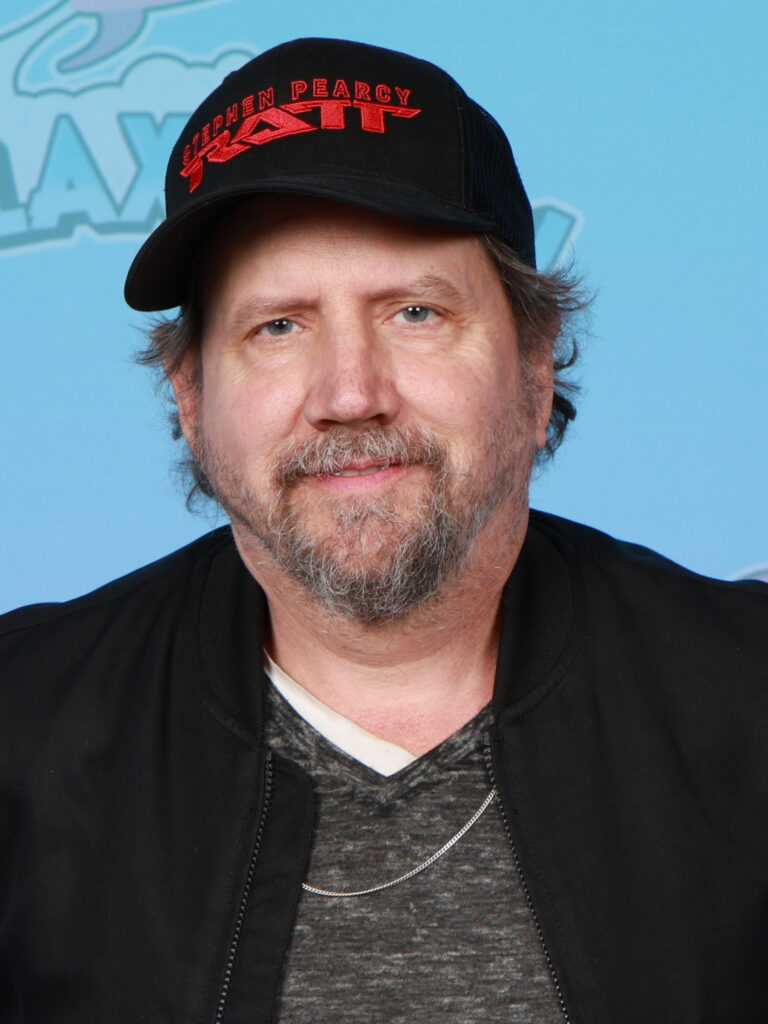
7. **Jamie Kennedy in ‘Son of the Mask’**
Jamie Kennedy was a recognizable face in Hollywood, largely known for his memorable portrayal of the horror-obsessed Randy Meeks in the hugely popular “Scream” franchise. His work in these iconic slasher films established him within a specific niche, earning him a dedicated fanbase and recognition for his comedic timing and genre-savvy performances. This period marked a highlight in his early career, setting expectations for his future endeavors.
However, in 2005, Kennedy took on what proved to be an “unenviable task”: starring in “Son of the Mask.” This film was a belated and widely criticized sequel to Jim Carrey’s successful 1994 hit, “The Mask.” The sequel was an unmitigated disaster, universally panned by critics and audiences alike. It infamously “won” the Golden Raspberry Award for Worst Picture of the Year, and Kennedy’s performance was subjected to brutal scrutiny.
The severe critical backlash against “Son of the Mask” had a profoundly negative impact on Kennedy’s Hollywood career, effectively derailing his professional momentum. The experience was so damaging that it inspired him to direct the 2007 documentary “Heckler,” a film that explored “the destructive power of movie blogs” and the personal toll of harsh criticism on entertainers. This demonstrates the deep personal and professional wound inflicted by the film’s reception.
Kennedy articulated his frustration with the nature of criticism, stating to IFC, “My whole thing is, ‘review the piece, not the person.'” He passionately argued, “If I make a movie about a baby that flies and turns green, that’s one thing, but don’t start attacking me, my family, my life and my faith personally.” This reveals the emotional burden that often accompanies public failure in the entertainment industry, particularly when criticism crosses into personal attacks.
“Son of the Mask” thus stands as a singular, defining point in Jamie Kennedy’s career, marking a significant downturn from his “Scream” era success. The film’s overwhelming failure and the subsequent fallout significantly curtailed his opportunities in mainstream Hollywood, leaving him to grapple with the lasting repercussions of a universally derided project. His story serves as a stark reminder of how a single misjudgment in role selection can have far-reaching and detrimental effects on an actor’s trajectory.
Read more about: Unveiling the Shadow Warriors: Inside the Secret World of Navy SEALs and Their Unmatched Legacy

8. **Demi Moore in ‘Striptease’**
Demi Moore’s early career was a whirlwind of success, emerging from the influential Brat Pack to star in mega-hits like 1990’s “Ghost.” This film impressively grossed over $500 million globally against a modest $22 million budget, cementing her as a formidable presence. By the mid-1990s, her star power had soared, making her the highest-paid actress in Hollywood, famously commanding a record $12.5 million for the erotic comedy “Striptease.” This period established her as a highly sought-after and bankable talent.
However, the high expectations for “Striptease” were quickly dashed upon its release in 1996. The film proved to be an unmitigated critical and commercial failure, opening behind other major releases and swiftly earning six Golden Raspberry Awards, including Worst Picture. This abrupt downturn in reception delivered a significant blow to Moore’s carefully built reputation and industry standing.
Overnight, Demi Moore was branded “box office poison,” a label that sent ripples throughout Hollywood. Reports emerged of Disney executives expressing serious concerns about the release of her next film, 1997’s “G.I. Jane.” One senior executive reportedly told Newsweek, “People just don’t want to see her. We would have to drag them kicking and screaming to see this movie,” clearly illustrating the immediate and profound impact of “Striptease”‘s failure on her marketability.
Disney’s fears were unfortunately realized as “G.I. Jane” also failed to achieve critical or commercial success, further solidifying the perception of Moore as a declining star. Her career never fully recovered from this “double whammy,” and she gradually receded from the intense Hollywood spotlight. In subsequent years, her personal life often garnered more media attention than her professional roles, a stark contrast to her earlier period of cinematic dominance.
Read more about: From Red Carpets to Playpens: 14 A-List Actors Who Bravely Hit Pause on Stardom for Parenthood

9. **Geena Davis in ‘Cutthroat Island’**
Academy Award-winning actress Geena Davis had carved out a distinguished career in Hollywood, celebrated for her powerful and critically acclaimed performances. Her roles in films like “The Accidental Tourist” and the groundbreaking “Thelma & Louise” showcased her talent and solidified her standing as a respected leading lady. Her reputation for delivering strong, memorable characters made her a significant presence in the industry, earning her widespread admiration and industry respect.
In 1995, Davis embarked on an ambitious project, the action-adventure film “Cutthroat Island,” directed by her then-husband Renny Harlin. The film was an enormous undertaking, boasting a substantial budget of $98 million, and was envisioned as a grand spectacle. This high-stakes production placed considerable pressure on all involved, particularly its lead star, who was expected to carry the commercial weight.
Unfortunately, “Cutthroat Island” became notorious as a catastrophic commercial and critical failure. Its poor performance at the box office resulted in devastating financial losses for the studio, marking it as one of the biggest flops in cinematic history. Davis herself faced considerable criticism, with her performance often singled out for being underwhelming, which only exacerbated the film’s overall negative reception.
The catastrophic failure of “Cutthroat Island” delivered a severe blow to Geena Davis’s career momentum. In the decade that followed, she struggled significantly to regain her prominent footing in Hollywood, appearing on the silver screen only twice in “Stuart Little” and its sequel, “Stuart Little 2.” This marked a dramatic shift from her earlier period of consistent, high-profile roles, showcasing the lasting damage a single box office bomb can inflict on an actor’s trajectory and perceived bankability.
Read more about: 9 Producers Who Wrecked Their Studios Over One Over-Budget Flop: A Deep Dive into Hollywood’s Costly Mistakes

10. **Taylor Lautner in ‘Abduction’ (2011)**
Taylor Lautner rocketed to global fame as part of “The Twilight Saga,” where his portrayal of the loyal werewolf Jacob Black garnered him a massive following, particularly among “Team Jacob” loyalists. This immense popularity positioned him as a burgeoning breakout star, with his name frequently linked to a variety of high-profile blockbuster projects, including a collaboration with director Michael Bay and adaptations of “Incarceron” and “Stretch Armstrong.” The industry clearly saw him as a future leading man with significant box office potential.
Capitalizing on his “Twilight”-fueled popularity, Lionsgate quickly cast Lautner in the lead role of the 2011 mystery-action thriller “Abduction.” The film was intended to be his first major starring vehicle outside of the immensely successful vampire franchise, a crucial test of his solo box office appeal. However, “Abduction” was met with overwhelmingly negative critical reviews and failed to generate the audience enthusiasm needed to justify the actor’s considerable asking price and the studio’s investment.
The dismal reception of “Abduction” proved to be a significant turning point, undermining Lautner’s accelerated path to A-list status. Unlike his “Twilight” co-stars, Kristen Stewart and Robert Pattinson, who managed to navigate their post-franchise critical and commercial blunders with more resilience, Lautner’s career struggled significantly to maintain momentum. The film’s letdown made it challenging for him to secure subsequent mainstream roles, creating an unexpected career slump.
In the years that followed, Lautner found himself increasingly reliant on supporting roles, often in projects associated with Adam Sandler, such as “Grown Ups 2” and “The Ridiculous 6.” While these provided some screen time, they did not offer the opportunity to re-establish him as a formidable leading man. His struggle to keep his name consistently in the mainstream highlights how a poorly received star vehicle can profoundly impact a promising actor’s trajectory, even after immense franchise success.
Read more about: The Enduring Shadow of Jacob Black: Why Hollywood’s Spotlight Dimmed for Taylor Lautner

11. **Nicolas Cage in ‘Bangkok Dangerous’ (2008)**
Nicolas Cage, an Oscar-winning actor, has experienced a career marked by both significant highs and numerous lows. While he has accumulated a considerable number of critically acclaimed films, particularly early in his career, his filmography also features a long list of projects that failed to resonate with critics or audiences. Despite these occasional misfires, Cage often managed to balance them with timely hits, maintaining his standing as a credible A-lister for a considerable period.
However, his position as a reliably bankable star began to look seriously dubious after a string of duds in the mid-2000s, including 2006’s “The Wicker Man” and 2007’s “Ghost Rider.” Although he briefly regained financial success with a sequel to “National Treasure,” his next major outing, 2008’s “Bangkok Dangerous,” delivered a significant blow, signaling a substantial shift in his career trajectory and public perception within the industry.
“Bangkok Dangerous,” a remake of a 1999 Thai film, proved to be an unmitigated disaster. The film failed to recoup even its modest budget in the worldwide market and was savaged by critics, receiving an embarrassingly low 9 percent approval rating on Rotten Tomatoes. Reviewers lambasted its “murky cinematography, a meandering pace, a dull storyline, and rather wooden performances,” directly impacting Cage’s critical standing. This monumental failure forced Cage to seriously reexamine his career choices, pushing him into a prolonged period of straight-to-VOD releases.
For several years, Cage settled into a career largely defined by direct-to-video films, leaving many fans and critics to wonder about his artistic direction. Yet, in a remarkable turn of events, something unexpected happened: audiences began to embrace the unique “Cage persona.” In recent years, he has enjoyed a resurgence with a series of surprise hits, including critically acclaimed independent films like “Pig” and “Mandy,” and even a voice role as Spider-Man Noir in “Spider-Man: Into the Spider-verse.” This unusual career arc underscores the unpredictable nature of an actor’s longevity, even after significant professional setbacks.
12. **Taylor Kitsch in ‘John Carter’ (2012)**
Taylor Kitsch’s journey to Hollywood was marked by initial struggles, including living out of his car in Los Angeles and sleeping on subways in New York while pursuing his acting aspirations, after an injury derailed a potential professional hockey career. His perseverance eventually paid off when he landed the pivotal role of running back Tim Riggins in the NBC football drama “Friday Night Lights.” This role earned him a dedicated cult following and positioned him for broader industry recognition.
In 2012, Kitsch took on a monumental challenge by fronting Disney’s highly anticipated, and ultimately disastrous, adaptation of “John Carter.” The film was an enormous production, carrying immense expectations and a reported budget that contributed to Disney losing an estimated $200 million. This high-profile lead role placed Kitsch directly in the spotlight of a major studio gamble, making its outcome critically important for his burgeoning career and future prospects.
The catastrophic performance of “John Carter” at the box office quickly led to the film becoming synonymous with “box office bomb,” as noted by Forbes. To further complicate matters, the disappointing box office returns of “Battleship,” another major film Kitsch starred in later that same year, proved to be a decisive blow. Box office analyst Jeff Bock remarked to Yahoo! Movies that “There is no doubt that a studio would think twice about casting him as a lead after the poor performances of both ‘Battleship’ and ‘John Carter’.”
These back-to-back commercial failures profoundly impacted Kitsch’s standing in the industry. While he might still have been considered for roles, his “A-list” potential had significantly diminished. The combined weight of these projects shifted perceptions of him as a leading man, illustrating how even a beloved actor from a popular TV series can face immense career repercussions from high-profile cinematic misfires, particularly when they involve significant financial losses for major studios.
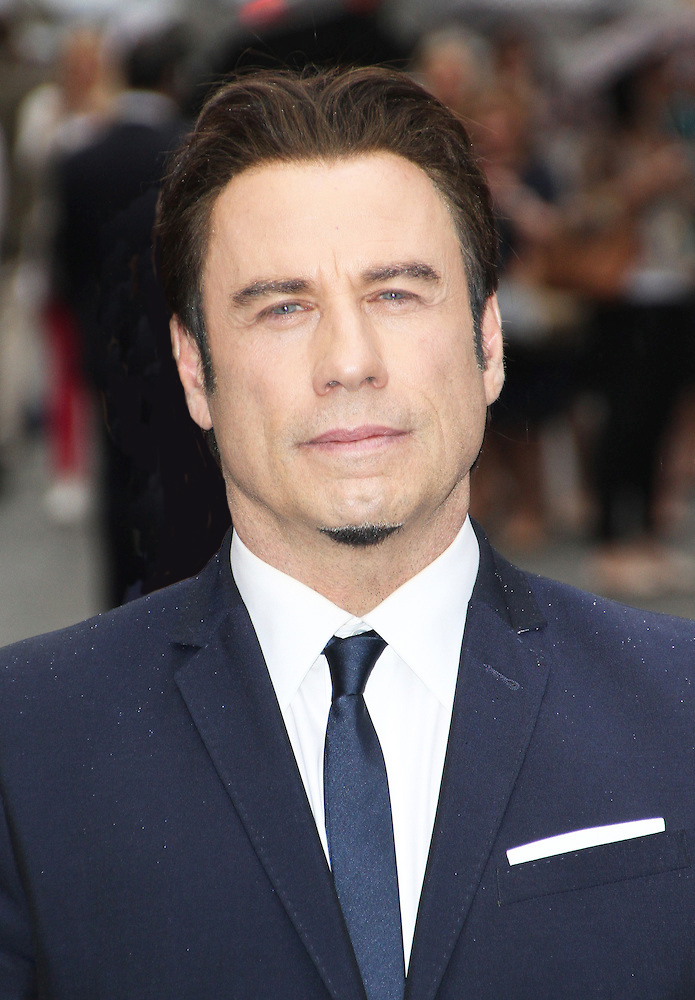
13. **John Travolta in ‘Battlefield Earth’ (2000)**
John Travolta’s career is a compelling study in resilience, famously marked by multiple dramatic resurrections after periods of decline. He achieved global stardom with “Grease” in 1978, but his star faded by the mid-1980s due to a series of poorly received pictures. He then made a remarkable comeback at the turn of the decade with “Look Who’s Talking,” which unexpectedly grossed nearly $300 million worldwide, only to see his momentum stall with two subpar sequels.
It wasn’t until the mid-1990s that Travolta truly re-entered the mainstream, largely thanks to Quentin Tarantino’s “Pulp Fiction,” which allowed him to reinvent himself once more. Tarantino’s guidance even led him to “Get Shorty,” followed by two more $100 million-grossing films: 1996’s “Phenomenon” and 1997’s “Face/Off.” However, a series of questionable choices over the subsequent years meant his career faced another severe implosion as the new millennium began.
The year 2000 saw Travolta starring in “Battlefield Earth,” a drastically miscalculated adaptation of L. Ron Hubbard’s novel. The film was an unmitigated disaster, branded by The Guardian as “one of the worst movies ever made,” a sentiment echoed by critics across the board, resulting in a pitiful 3 percent approval rating on Rotten Tomatoes. With a production cost of $73 million, it returned less than $30 million, sinking Travolta’s career into another deep slump.
“Battlefield Earth”‘s colossal failure served as a stark reminder of the risks associated with vanity projects and poor script selection, significantly diminishing Travolta’s Hollywood standing once again. Despite this severe setback, Travolta has continued to work, appearing in various projects and demonstrating a remarkable ability to persist in an industry often unforgiving of such high-profile failures. His story remains a testament to both the transient nature of fame and the enduring spirit of an actor determined to stay in the game.
Read more about: Roger Ebert’s Sci-Fi Shakedown: The 10 Cinematic Blunders He Just Couldn’t Stand
14. **Tom Green in ‘Freddy Got Fingered’ (2001)**
Tom Green emerged as a unique, often controversial, comedic voice in the late 1990s. After an earlier foray into rap music, he developed his distinct brand of gross-out comedy on public access TV, cultivating a cult following. This grassroots success eventually caught the attention of MTV, which picked up “The Tom Green Show” in 1999, further solidifying his reputation for unconventional and boundary-pushing humor and securing a dedicated fanbase.
His burgeoning popularity eventually piqued Hollywood’s interest, leading 20th Century Fox to offer him a significant opportunity: the chance to write, direct, and star in his own feature film. The result was the surreal and highly anticipated “Freddy Got Fingered,” released in 2001. This project represented a major studio investment in Green’s distinctive comedic vision, aiming to translate his television success to the big screen and expand his commercial appeal.
However, “Freddy Got Fingered” debuted to overwhelming critical scorn, universally panned by reviewers and audiences alike. It ended its theatrical run as a bitter box office disappointment, barely recouping its budget and failing to turn a profit after marketing costs. This monumental failure led to Green taking home the Golden Raspberry Awards for Worst Actor, Worst Director, and Worst Screenplay, cementing its status as a career-damaging flop.
The film’s catastrophic reception effectively halted Tom Green’s ascent as a mainstream Hollywood star. The rising talent came crashing back to earth with a profound thud, and he has since struggled to recapture the widespread public interest he once enjoyed. While “Freddy Got Fingered” has, over the years, slowly acquired a cult status for its audaciousness, it came “all too little, too late” for Green’s initial trajectory. His experience starkly illustrates how a singular, polarizing project can fundamentally alter an artist’s career path in the fickle world of entertainment.
Read more about: The Casting Curse: 12 Actors Who Took On One Role That Forever Changed Their Hollywood Trajectory
The narratives of these actors serve as a compelling, if sobering, testament to the precarious nature of stardom in Hollywood. From commanding top dollar to becoming an industry pariah, or from cult hero to box office bomb, the trajectory of a career can shift dramatically with a single misstep. These stories underscore that even immense talent and early success offer no impenetrable shield against critical panning or commercial failure. For aspiring artists and seasoned veterans alike, the entertainment industry remains an unpredictable landscape where one pivotal role can redefine a legacy, for better or, often, for worse.” , “_words_section2”: “1845

